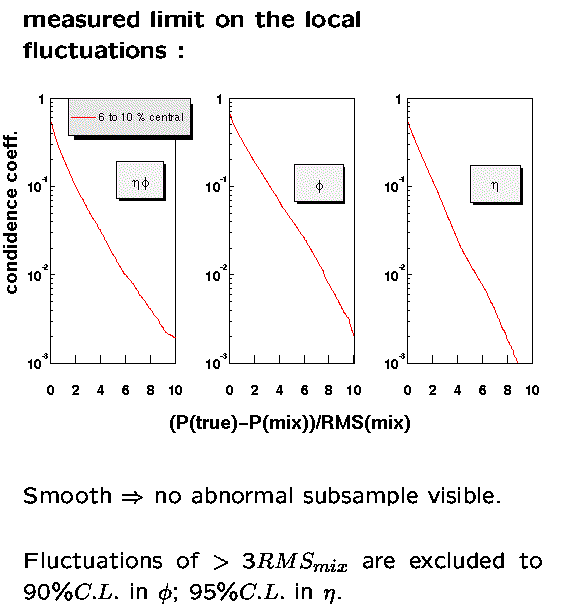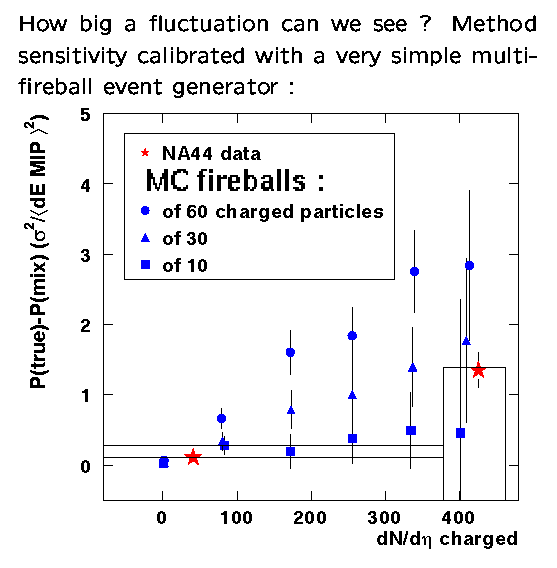EVENT TEXTURE
SEARCH FOR CRITICAL FLUCTUATIONS IN PB+PB COLLISIONS AT THE CERN SPS.
Mikhail Kopytine, SUNY at Stony Brook, for the NA44 Collaboration.
Talk at the
Parallel Session III-B
of the 15th Quark Matter Conference,
January 19, 2001, Stony Brook
Abstract :
NA44 uses a Si pad array covering 1.5 < eta < 3.3
to study charged hardon production in 158 A GeV/c Pb+Pb collisions at the
CERN SPS. We apply a multiresolution analysis, based on a Discrete
Wavelet Transformation, to probe the texture of particle distributions
in individual events by simultaneous localization of features in space
and scale. Scanning a broad range of multiplicities, we look for
evidence of critical behaviour in the power spectra of local density
fluctuations. Measured results are compared with detailed simulations
of detector response, using as input heavy ion event generators.
An upper limit is set on the probability and magnitude of critical
fluctuations.
Significant fraction of the talk (motivations, technical introduction,
analysis of the background effects and systematic errors, basic results)
was as at the
ISMD meeting .
Only new slides are shown here.


The multifireball event generator was used to study the sensitivity of the
method (including detector response simulation) to the presense of local
fluctuations/texture of varying "grain coarseness".
In the model, a final state of certain charged particle
multiplicity Nch is constructed
by making a superposition of isotropic fireballs undergo a longitudinal
expansion.
The longitudinal expansion is simulated by Lorentz-boosting the fireballs
along the longitudinal azis.
Total momentum of the system is fixed at 0, and total transverse momentum
of every fireball is fixed at 0.
The grain coarseness is controlled by changing the Nch/fireball parameter
of the model.
Conclusion :
-
a novel method of EbyE analysis has been applied to the
SPS Pb+Pb data; DWT-estimated power spectra of
local fluctuations
in the hadron distribution in 2D (eta,phi) are obtained
in a wide range of multiplicities
- the power spectra are corrected for static texture contributions
using a mixed event technique, thereby introducing a scale localized
texture correlation observable
-
the texture correlation is compared with that of RQMD events,
folded with the detector response MC simulation
-
multifireball event generator ``calibrates''
sensitivity of the method to a cluster size;
data consistent with clustering of N_ch/fireball < 30
-
see no evidence of critical phenomena
Back to Main

